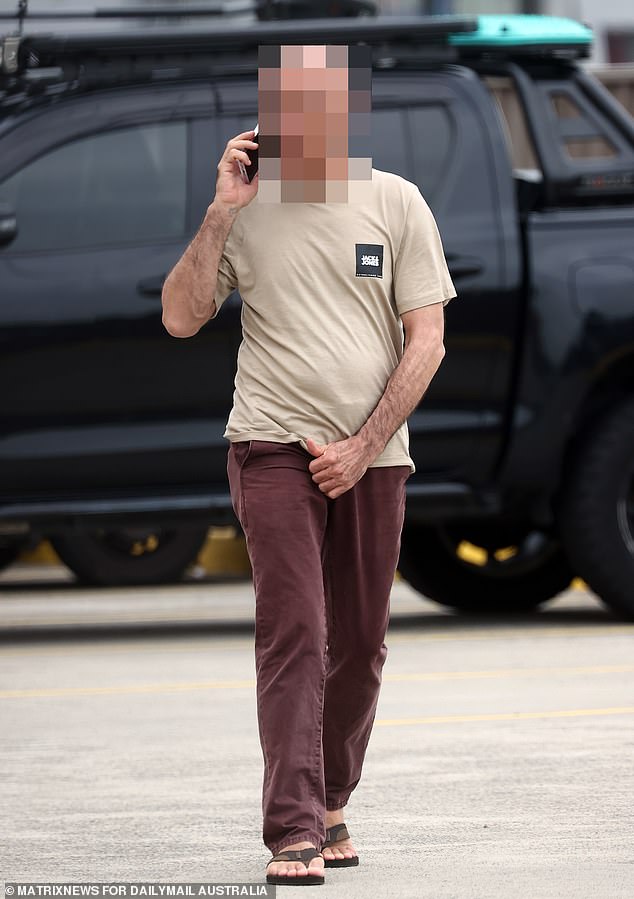Why the 141 asylum seekers released by the High Court cannot be identified – despite several going on the run and others refusing to comply with monitoring laws
The Supreme Court has clarified its ruling that indefinite immigration detention is unlawful, but many Australians do not understand why recently released foreign-born criminals have not been publicly identified.
At least 141 long-term detainees have been released from detention since the court ruling and the reasons why the identities of most of them remain unknown fall into three categories.
First, the country’s refugee system grants asylum seekers anonymity for privacy reasons during tribunal proceedings in which certain visa decisions are reviewed.
At least one of the released asylum seekers also had his identity suppressed by court order, in addition to the protection he had already received.
And the federal government has chosen not to proactively release the names of asylum seekers it released from indefinite detention after the Supreme Court ruling.
Many recently released immigration detainees were given pseudonyms when they appeared before the Administrative Appeals Tribunal and cannot be identified. The man pictured was released after the Supreme Court ruling. There is no suggestion that he is a criminal
The plaintiff in this landmark case was known only as NZYQ in his last legal proceedings, but was prosecuted and jailed under his own name for raping a 10-year-old boy.
His real name – or anything else that could identify him – can no longer be reported due to a Supreme Court non-publication order on June 2.
NZYQ was already known by that four-letter pseudonym to the Administrative Appeals Tribunal, which reviews visa decisions and has a legal obligation not to name certain applicants in its published decisions.
Under the Migration Act, the AAT may not identify a person requesting a review of a decision refusing or canceling a protection visa or a protection-related bridging visa. NZYQ falls into that category.
Another beneficiary of the court ruling, a refugee identified only as FYBR, was jailed for repeatedly soliciting teenage boys for sex and has been released into the community without his identity revealed.
There is no known court order on FYBR’s identity, but his identity has not been made public by the federal government and he is known to the media only by his tribunal-appointed pseudonym.

At least 141 long-term detainees have been released since the Supreme Court ruling, and the federal government has not released the names of any of them. The man pictured was released after the Supreme Court ruling. There is no suggestion that he is a criminal
The legislation banning the naming of refugees challenging protection visa decisions extends to failing to identify family members or dependents of an applicant.
“For decisions on refugees (protection visas), we replace the name of the applicant with a generic text in the source citation and in the decision,” according to the AAT website.
The AAT also redacts any other information that could directly or indirectly identify the applicant.
That includes ‘details relating to children, domestic violence or sexual abuse, occupations, group memberships, pending criminal charges and sensitive medical conditions.”
At least 141 long-term detainees have been released since the Supreme Court’s ruling.
Some of the released asylum seekers have been convicted of serious crimes, including murder, and four have refused to wear ankle monitors.

Several released detainees were identified because their circumstances were already public knowledge and their names were not the subject of non-publication orders or legal restrictions.
Since the Supreme Court ruling led to the release of detainees, the government has repeatedly declined to comment on individual cases.
The details known about some cases are disturbing.
NZYQ is a member of Myanmar’s persecuted Rohingya minority who was on a bridging visa when he raped a 10-year-old boy.
After serving three years and four months in prison, he was transferred to immigration detention and his protection visa application was rejected because he was considered a danger to the community.
FYBR, who was born in Afghanistan and came to Australia by boat from Pakistan, was jailed for procuring a child for unlawful sexual activity, stalking/intimidation with intent to cause fear, and common assault.
After completing his prison sentence, FYBR applied for a safe haven visa on the basis that he was exposed to pressexecuted for his Hazara ethnicity and Shia Muslim religion.
As with NZYQ, that application was rejected because FYBR did not meet the character test.
Several released detainees were identified because their circumstances were already public knowledge and their names were not the subject of non-publication orders or legal restrictions.
A Home Office document tendered in the NZYQ Supreme Court case, which contained snapshots of 18 men held indefinitely, contained enough information to identify some of them.
They included woman killer and Iranian refugee Tony Kellisar, and Malaysian murderer Sirul Azhar Uma, who cannot be deported because he is being executed in his home country.
NZYQ’s surname was accidentally included in a Home Office document uploaded to the Supreme Court’s online file by his lawyers, but has since been redacted.
